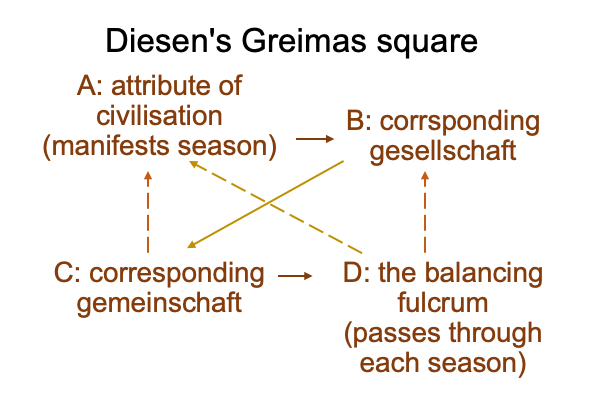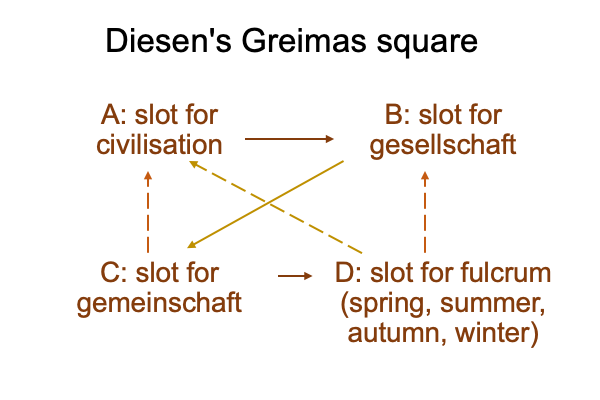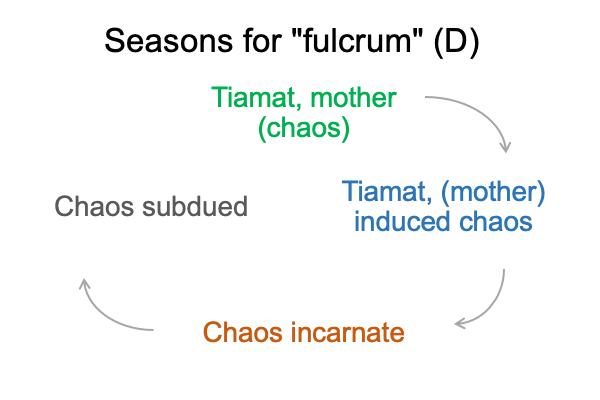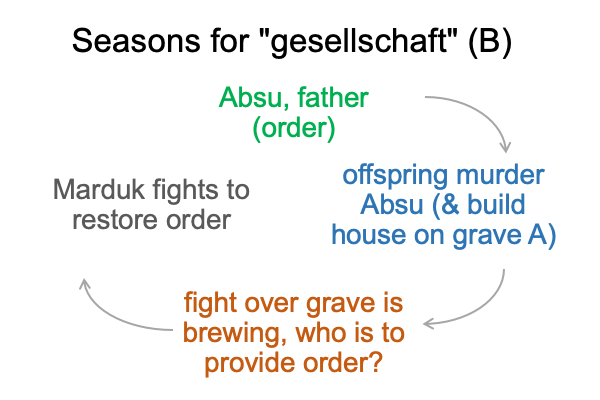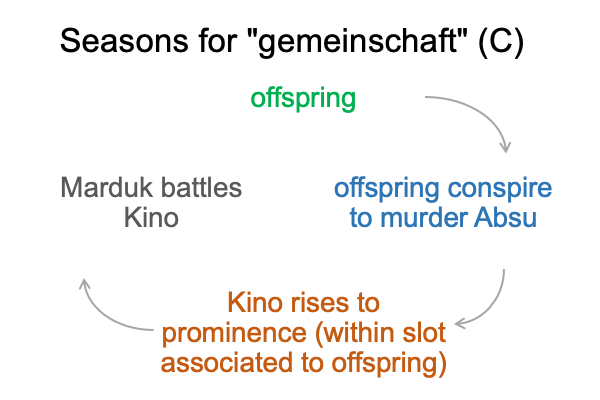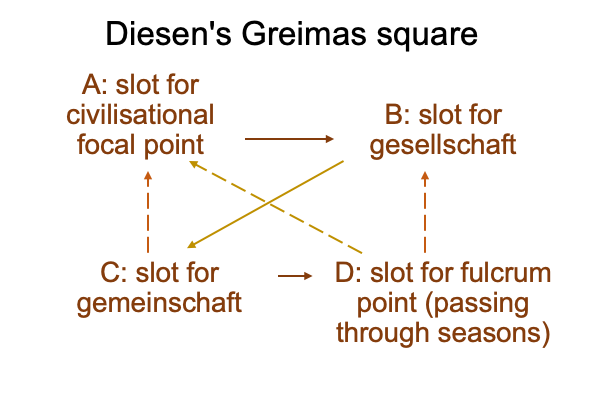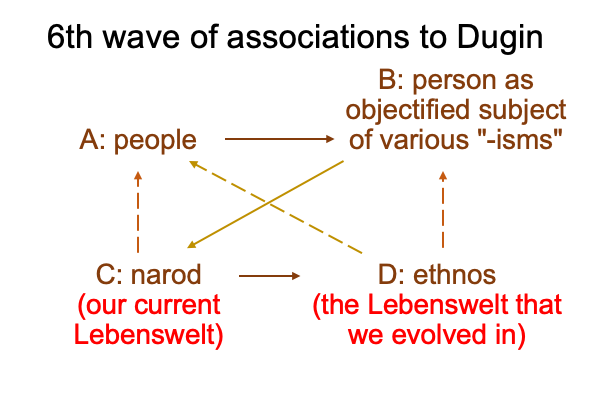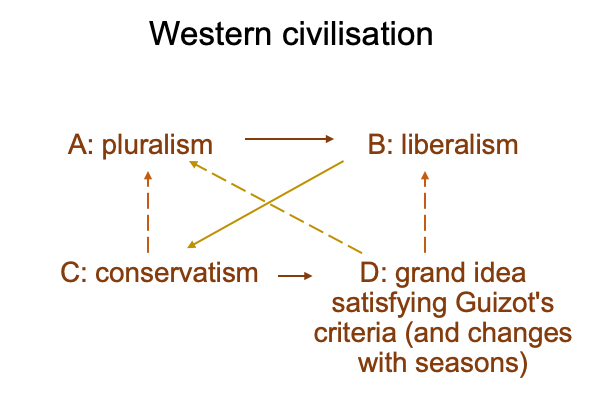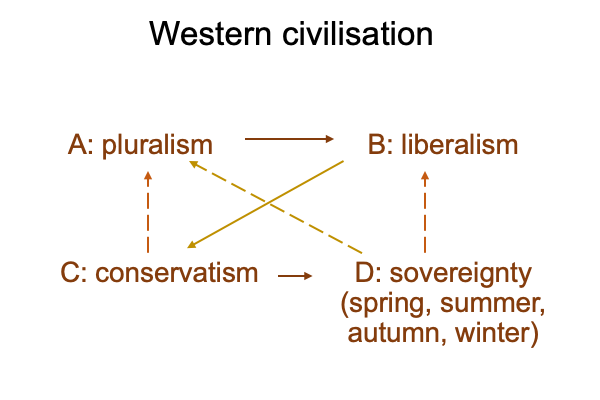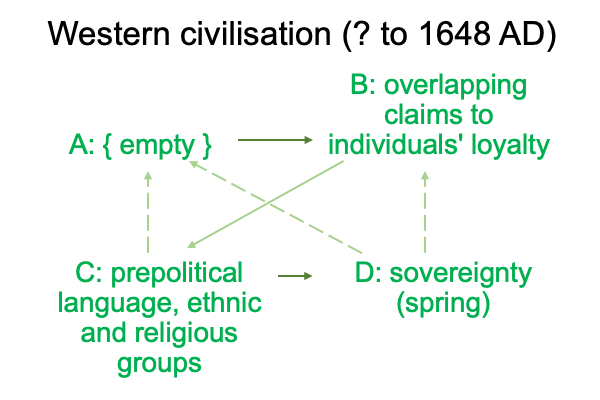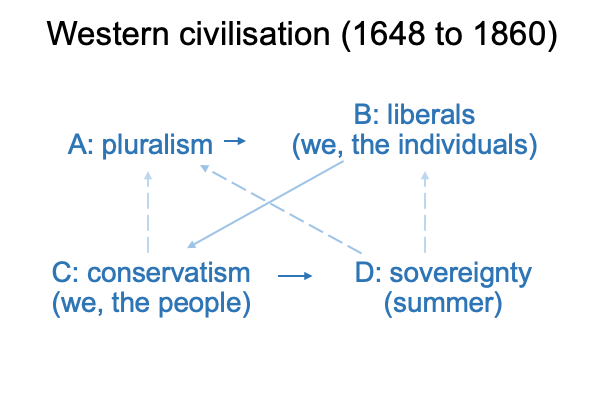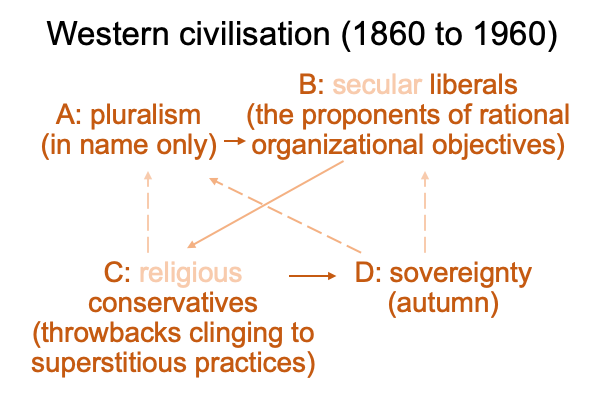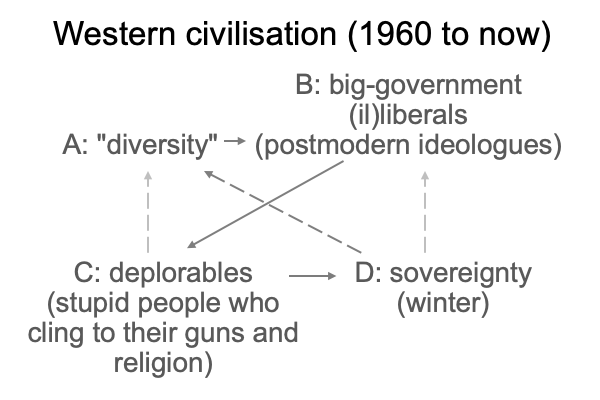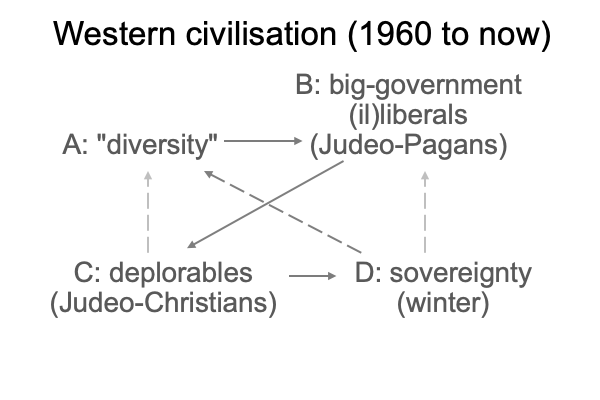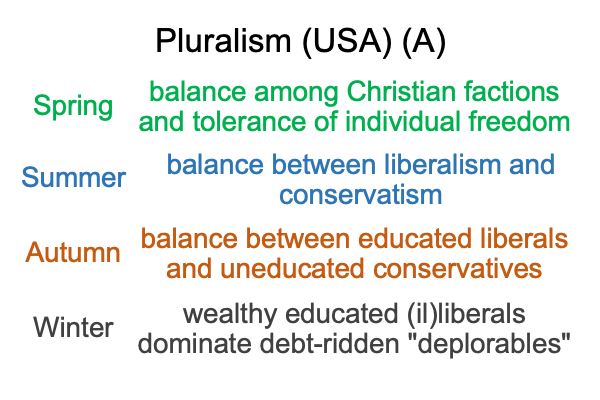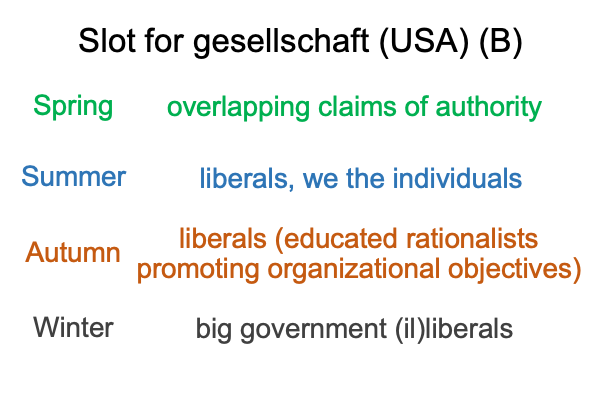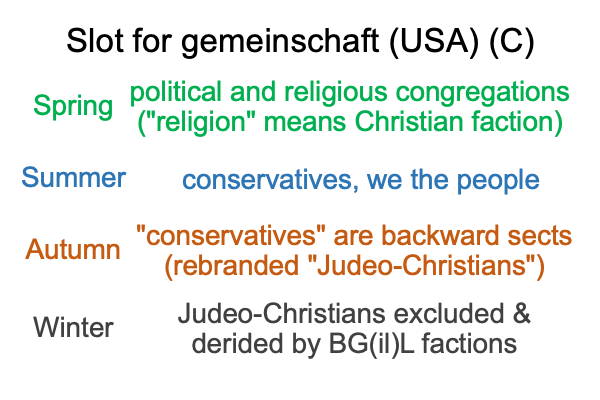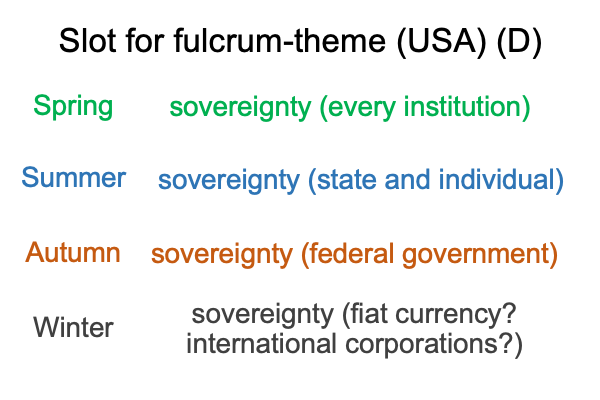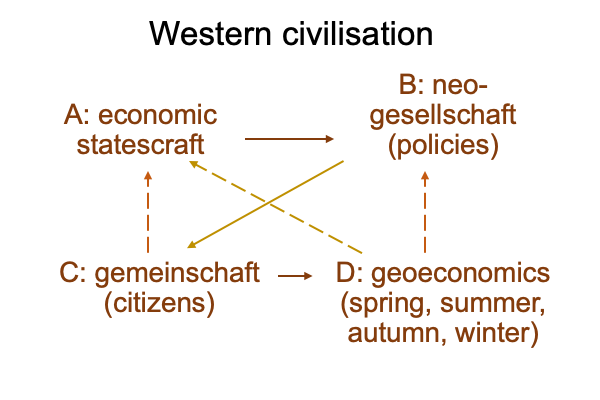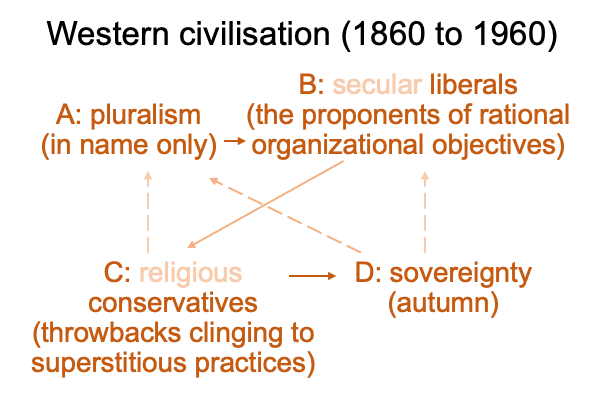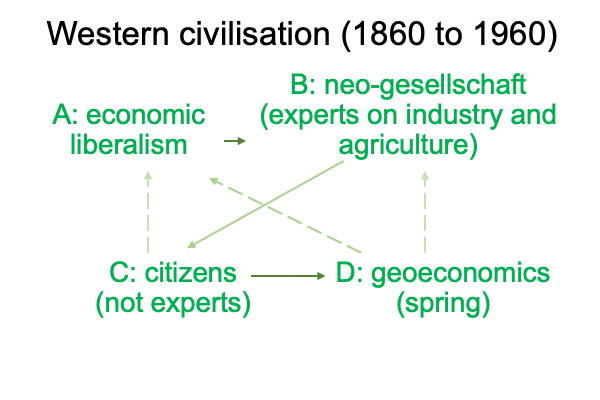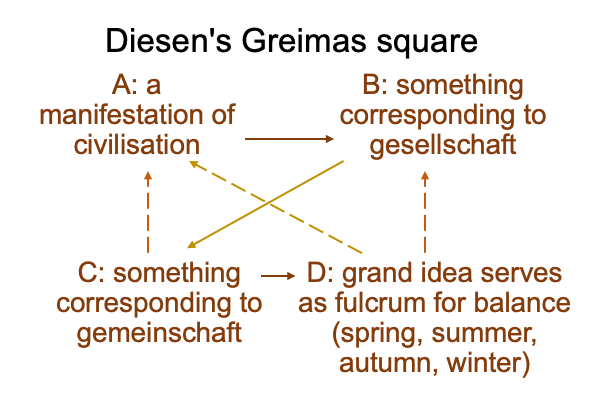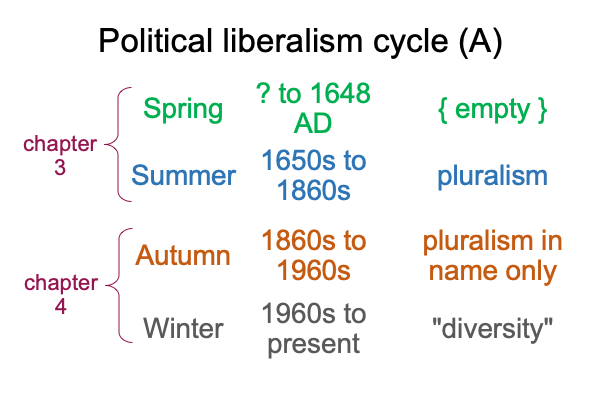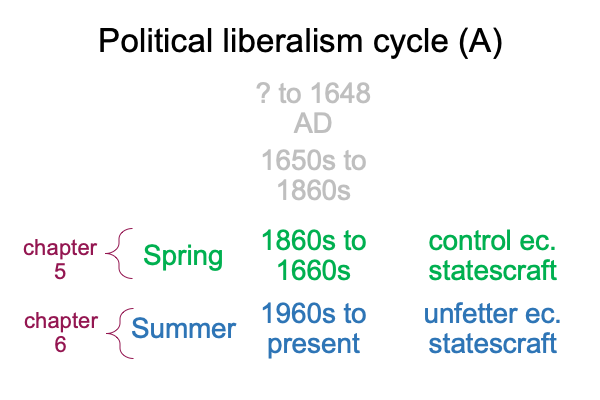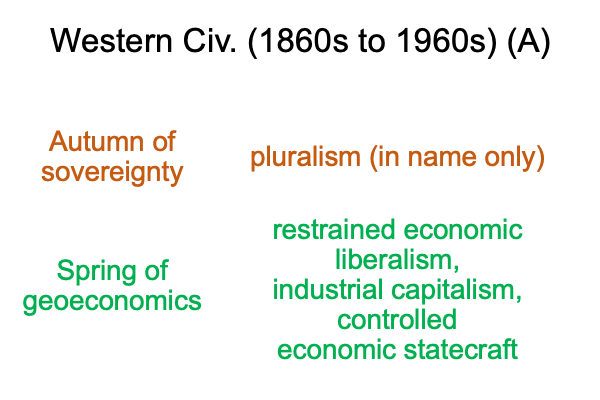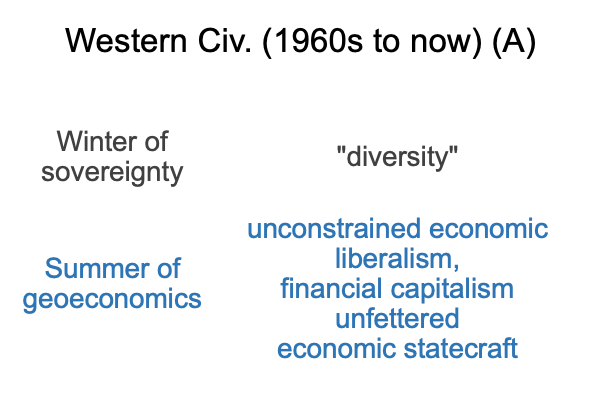Looking at Glenn Diesen’s Book (2019) “The Decay … And Resurgence…” (Part 4 of 21)
0023 What is the difference between irrational and rational?
Irrational thoughts are hard to put into speech-alone talk, because our evolved mental modules are adaptations realized in the milieu of hand talk. They are spontaneous, yet responsive to training. Character-building cannot be brought about by someone speaking precepts. Instead, character-building relies on implicit abstraction, which may involving imagining how to live the precepts. Good habits build character.
Rational thoughts rely on speech-alone talk. Speech-alone words can label all the parts of a whole, then name relations among the parts, then be used to build mathematical and mechanical models. Diesen defines the words, “gemeinschaft” and “gesellschaft”, as part of his sociological modeling of civilizational trends. Yes, Diesen builds a model using the specialized terminology of German Sociologist Ferdinand Tonnies, who publishes Gemeinschaft und Gesellschaft in 1887. The book is translated into English as Community and Society.
0024 Remember, the full title of Diesen’s book is The Decay of Western Civilization and Resurgence of Russia: Between Gemeinschaft and Gesellschaft.
0025 What about the potentiation of civilization by the first singularity? How does that enter the picture.
Speech-alone talk spreads, through mimesis, from the Ubaid to neighboring hand-speech talking cultures. Why? Talk about gesellschaft. Speech-alone talk facilitates labor and social specializations. So, the Ubaid quickly becomes wealthier and more powerful than surrounding hand-speech talking cultures. When the Ubaid sends their emissaries, the difference must be obvious. The neighboring cultures realize that all they have to do to become wealthier and more powerful is to drop their hand talk. After some adjustments (like getting rid of the old shamans who resist progress and predict disaster if the people follow the ways of the Ubaid), neighboring cultures are soon practicing speech-alone talk and enjoying a strange blossoming of what gesellschaft can deliver. They enter our current Lebenswelt of unconstrained social complexity.
0026 Social and labor specialization complexity adds more vocabulary to speech-alone talk. Each specializationgenerates its own particular vocabulary. Diverse specialized languages reside within each “mother tongue“.
How do specialized terms work?
0027 At the turn of the 1900s (AD, or should I say, the 7700s U0′?), the linguist Ferdinand de Saussure comes up with a new definition of spoken language. Spoken language consists of two arbitrarily related systems of differences, parole(talk) and langue (what goes on in our minds when we talk). Saussure’s new definition implies that each spoken word is merely a placeholder in two arbitrarily-related systems of differences. So, spoken words have no intrinsic meaning, presence or message. Decades later, “deconstruction” is the latest academic fashion to capitalize on this misinterpretation.
0028 Why do I say, “misinterpretation”?
Well, I already noted that we have an innate expectation that words (in hand talk) picture and point to their referents. But, spoken words cannot picture or point to anything. So, the question of how a spoken word works becomes significant.
Already, in point 0018, I showed one approach. Each spoken word may be considered an actuality2 within the normal context of definition3. The potential1 describes the meaning, presence and message that is projected into the actuality2. This approach is similar to a dictionary’s approach, but nonetheless different. How so? Each actuality2 is undergirded by elements corresponding to Peirce’s categories of thirdness (meaning), secondness (presence) and firstness (message).
0029 Another approach uses the Greimas square. Algridas Greimas (1917-1992 AD) is a French-Lithuanian semiotician concerned with how people conceptualize their world. To me, that sounds like Diesen’s “gesellschaft”. Conceptualization brings order. The Greimas square is valuable because it is a purely relational structure that illuminates spoken-words that occupy positions of similar meaning, presence and message, and are essential to a focal word’s place in the economy of a system of differences.
Remember, when discoursing in a specialized language, one must choose the right words.
0030 The general Greimas square is a purely relational structure expressing a geometry built on four rules.
Here is a picture.
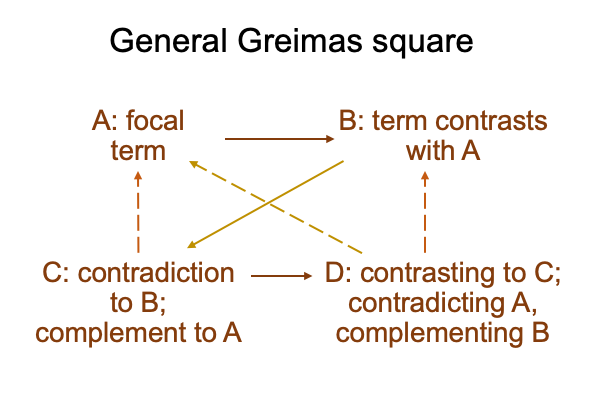
0031 Here are are the four rules, along with their application to the topic at hand.
0032 A is the focal term. For Diesen, the focal term concerns civilization and its attributes (including international relations, political systems, historical changes and so forth).
0033 B is a term that contrasts with A. For Diesen, gesellschaft and its attributes occupies this slot. When I think of civilization, I conjure images of bureaucracies and politicians, temples and palaces, the transportation of goods, and so on. All these images associate with gesellschaft.
One should never say, “civilization”, when one means politics, economics, philosophy, the arts and sciences (that is, “gesellschaft”). The contrast is palpable.
0034 C is a term that contradicts B and complements A. For Diesen, gemeinschaft and its attributes occupies this slot. When I think of the people who live in a civilization, I conjure images of artists and their patrons, the architecture of temples and the solidity of palaces, how people cook and how they dress, and so on. In this imagery, gemeinschaft (C) contradicts gesellschaft (B) and complements civilization (A).
0036 D is a term that contrasts with C, contradicts A and complements B. This is the hardest term to locate in Diesen’s theory. But, take a look at what Diesen asserts:
Civilization is a balancing act between the potentials of the spoken words, “gesellschaft” and “gemeinschaft”.
D must have something to do with “balance”.
0037 Here is a picture.
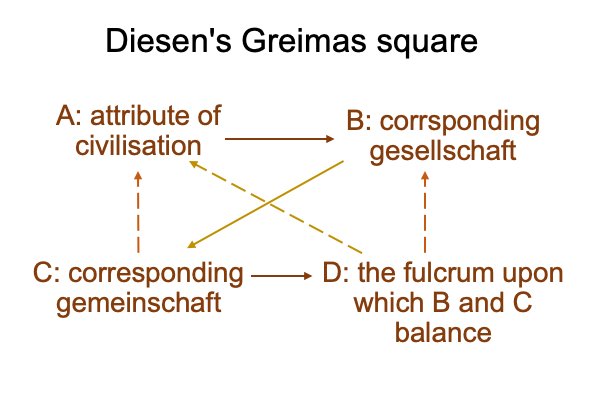
0038 Diesen does not stop there.
In chapter two, Diesen discusses the cyclical rise, decline and rebirth of civilizations.
He uses the metaphor of seasons: spring, summer, autumn and winter.
If I take a look at the above figure, where would the cycle turn?
To be, it turns on D, the foundational balance, and manifests in A, the attribute of civilization. The other elements, B and C, operate as two independent poles within the unity of the Greimas square. B and C adjust to the season.
0039 Here is a diagram of the Greimas Square version of Diesen’s approach to theorizing civilisation, presented in part one (chapters one and two) of his book.
